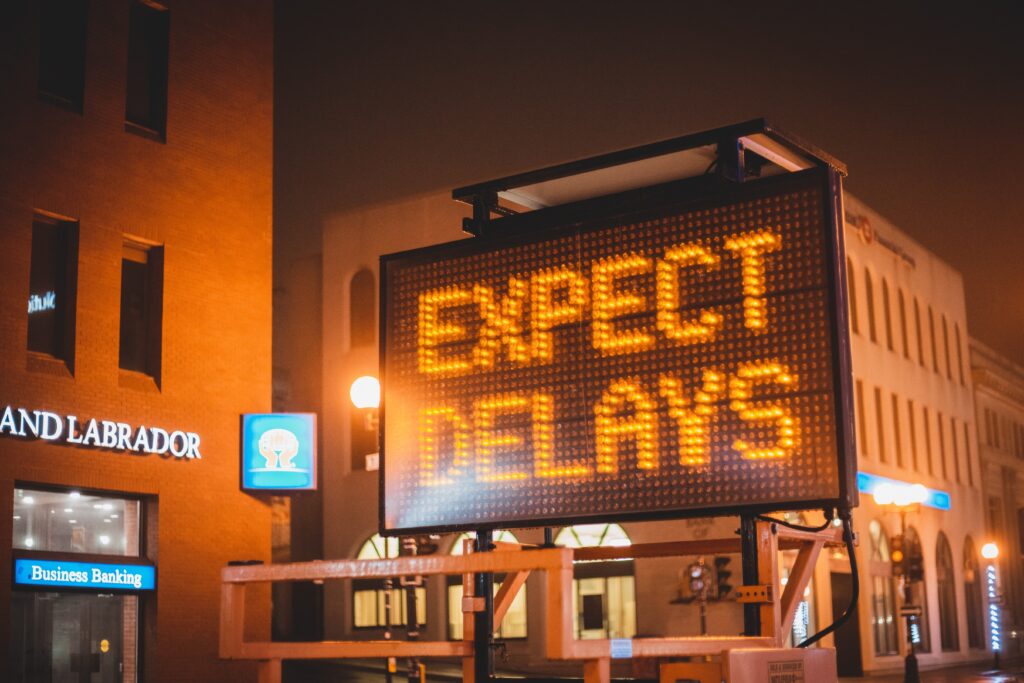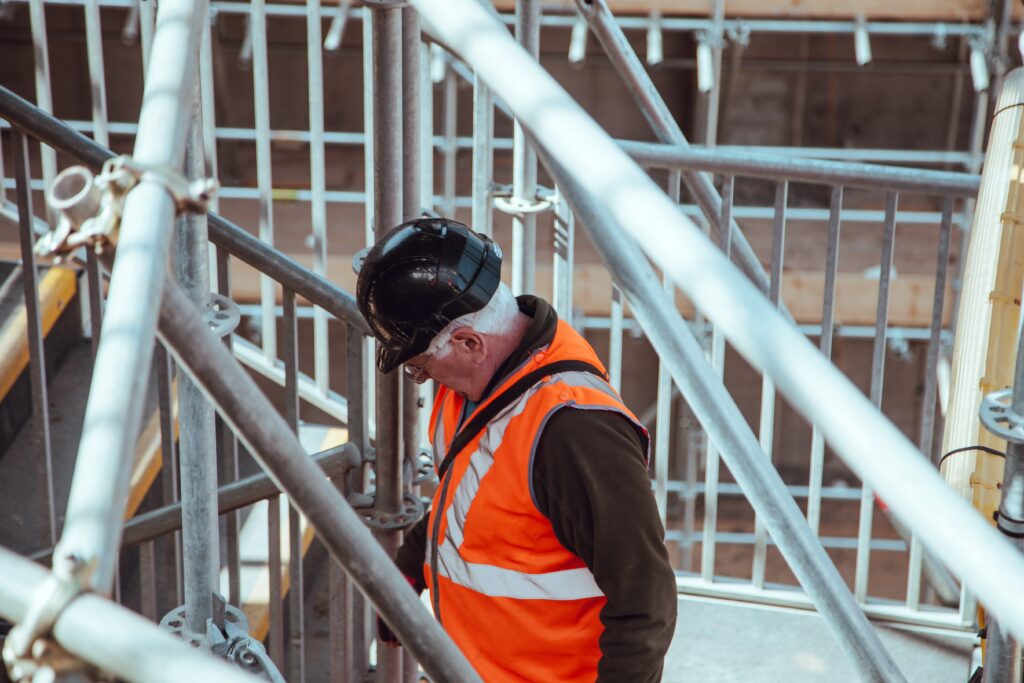Defining a Reliable Construction Schedule Recovery Plan

All construction projects are at risk of running behind schedule and may need a construction recovery plan. The wide array of unforeseen circumstances that could potentially affect its projected completion date perennially threaten to make agreed-upon deadlines tough to meet.
Defining what to do when schedules no longer mirror the realities in the field is as important as defining the schedule in the first place. What can at times devolve into a costly exercise in finger-pointing, blame assigning, and protecting one’s interests, can instead be a constructive process of mutual parties working together.
Keep reading for,
Include Construction Recovery Procedure in the Contract
If everyone’s on the same page from the start about the procedures to follow if the schedule slips, then it will make things work much smoother if it does. For example, a half-day late for a residential home-improvement project would likely be too minor to build safeguards against. But in a large construction project with hundreds of contractors affected by the work of others, every hour and day incur increasingly significant and costly delays.
The Project Management Institute defines the ideal project recovery process by following these six steps.
Recovery Intervention
The recovery intervention phase is knowing when you need a formal recovery plan. At what point do you declare the original schedule to be no longer plausible and initiate the process of defining a new one? Exactly what this entails varies significantly by project, so negotiating boundaries in advance is essential. Defining clear, readily measurable performance and timeline metrics will make it abundantly apparent when recovery scheduling is needed.
The best is to think in terms of thresholds within the baseline schedule. If a construction crew fails to reach specific benchmarks by a specified date, the owners can request a recovery plan.
Primary considerations are maintaining a ledger of all the reasons the schedule is off track. Depending on what the root cause is will affect who pays for the lost time. If the architect is slow to reply to time-sensitive requests from the contractors, then the contractors are in no way at fault for any delays. If contractors show up unprepared, short-staffed, and without all the tools to get the job done, the owners have a legitimate claim for a financial adjustment.
Once the baseline performance metrics are defined, along with the threshold limitations and agreed-upon remediation steps, both parties can enjoy the safety of having the boundaries defined clearly.
Too often, these terms are not clearly defined, and contractors and owners end up in an expensive dispute over who’s responsible for any delays.

Recovery Assessment
Once it becomes clear that the project controls will not hold, it’s time to enter the recovery assessment phase. During this step project, overseers will assess the project’s status and identify all areas of the project that are at risk of not being completed up to spec. They’ll then determine the underlying causes as to why the project is lagging behind its intended milestones.
Common reasons projects may suffer delays and overruns are:
- Poorly defined or poorly managed scope of work
- Low vendor performance
- Difficulty sourcing materials
- Not planning for how one task affects others
- Ineffective communication
Assessments are usually best conducted by senior project managers. They know better what to look for and can see past people’s tendency to hide their shortcomings. They’ll be able to get to the root of the issue and prepare complete and thorough documentation of their findings. Selecting someone aware of the legal and financial ramifications of the process is also essential, as making errors can lead to costly losses.
Construction Recovery Plan Recommendation
Produce a list of recovery recommendations based on the assessment findings. Each finding will typically have its resolution proposal. Each proposal should include the person’s name to own the resolution step, the steps to be taken, the budget involved, and the success criteria of the resolution. It’s essential to include a new performance baseline that is feasible for the contractors to meet.
Vet proposals thoroughly by the management team from various angles, including legal counsel, senior executives, and if possible, by supervisors and project managers who are familiar with the crew members involved. The more prepared the recovery recommendations, the more likely everyone will agree on the new course of action.
Providing recovery recommendations as quickly as possible is essential. The longer it takes to prepare, the further the project will fall, even behind schedule.
Recovery Planning
Once you select the recovery recommendations, the recovery planning stage can commence. Here the timeline is defined, and crews are assigned to accomplish the work. Clarify how long the recovery project will take and the expected milestones.
The recovery planning needs to have clearly defined project controls, just like the project did from the start. These include performance baselines, thresholds, and management details.
Gathering input from the entire team will help with buy-in from all participants. It may be the case that crews need to work overtime for a few weeks to catch up. In some instances, bring temp workers in to assist or join the project permanently.
Working collaboratively with the team will help keep everyone on the same page and contribute their best effort to get the project back on track.
Construction Recovery Plan Execution
Now that the plan is agreed upon, scheduled, and prepared for, it’s time to get back to work. Hopefully, with a newfound sense of purpose and direction, teams can focus on getting the recovery work done as quickly as possible so all can enjoy being in sync with the overall project goals.
Building and maintaining team morale is of high importance, as often construction teams will be working harder and maybe making less money for their efforts. Keeping critical stakeholders updated with timely and accurate progress and status reports will help keep people focused and on task.
Track deliverables closely and prepare punchlists quickly. All effort, energy, and direction focus on completing the recovery milestones.
It’s also essential to plan for how other crews on-site may be affected by the work, as it’s outside the scope of the original schedule. The recovery work could delay other tasks. Different teams could have access conflicts as there will likely be more people on-site at the same time. Coordinating recovery work into the broader project schedule is essential to integrating with the overall project schedule.
Recovery Closure
The recovery plan will reach the recovery closure stage if all goes as planned. The milestones have been met to satisfaction and signed off by the owners. Account for all financial and budgetary reconciliations, and the project will resume normal operations.
A formal process of signing off on each tenant of the recovery plan is essential. Owners and crew likely made sacrifices and concessions to meet the aggressive timeline of the recovery initiative. Signing off on each item will signify the completion of the process.
Signoff is also a good time to document lessons learned from the experience to prevent the schedule from running off track again.
What To Do When Recovery Plans Don’t Work
As may inevitably be the case, sometimes recovery plans don’t work out as intended. Perhaps the plan didn’t accurately account for the core issues with why the project was behind. Maybe there’s something fundamentally wrong with the contractor. Or it could be that the owners’ plans aren’t realistic with the resources available.
Whatever the reason, how should companies respond when one’s best efforts aren’t getting things back in line?
Here’s where legal, diplomacy, tact, and assertiveness all converge to steer the project in a direction that will reach the desired goals. Most companies don’t want to fire contractors. Even when they do want to terminate a contract, they know it’s usually not in their best interest to exit one contract and enter into a new one mid-project. Typically there will be money lost from the contractor who’s no longer on the job, and the new contractor will likely take a fair amount of ramping up before they become productive. Also, last-minute subcontractors for a job that’s not going well are likely to bid a project high.

When to Fire a Contractor
Fire contractors for egregious behavioral issues like drugs, fights, or theft. Mediocre performance, showing up late, not following instructions too closely are sometimes more challenging to know how to respond to. The contractors that get 70-80% done are sometimes the hardest to deal with. You need to continually hound them to finish the job, or you need to finish it up yourself or find someone else to do so. This gray area is irritating but leaves project managers in the position of evaluating if they’d save or lose money by letting them go. There’s also the human aspect since nobody wants to unduly put someone else out of work.
Here again, precise performance metrics depersonalize the process. If a contractor or crew is continually underperforming, you can tally up the amount of time lost and the number of infractions. End the contract in favor of finding a better fit if they break a certain threshold.
Sometimes root causes to performance may be factors beyond work, including personal or relational issues. It can be beneficial to understand if someone’s going through more significant problems outside of work before making rash decisions.
But construction sites are no place for those who aren’t working at total capacity. The safety of all involved could be at stake due to a worker’s occasional negligence. Sometimes companies need to make the tough calls for the greater good of the project.
Cultivate a Positive Workforce
Whether successful or otherwise, Recovery Plans could indicate more significant issues on the job site. If contractors and crew are working downstream from a disorganized managerial team with disconnected communications and frequent requests and emergencies, they may become unmotivated or less productive. At the same time, as frequently as not, contractors may not be as organized about keeping clean records of their performance and work completed. If and when it’s drawn into question, they may not be in a position to provide a reasonable explanation for why things ran off course in the first place. In reality, they may not be entirely at fault for any delays. Their sagging metrics could be related to owner mismanagement.
However, as would likely be the case, owners are more inclined to be more organized about tracking performance and monitoring metrics. So there’s an inherent risk that contractors may get stuck holding the bill for something they aren’t responsible for in the recovery plan.
Management needs to take the time to introspect and be sure they’re building an environment that contractors from all walks of life will succeed. If they do, everyone will win.
Providing precise and consistent instructions is just some way to supply crews with everything they need to do their jobs. By good planning, they may head off the recovery process altogether.
While it’s good to be prepared for contingencies and keep proper documentation of everything that transpires, taking steps to avoid it in the first place is well worth the effort.
How to create a reliable construction schedule recovery plan?
Construction projects risk encountering delays and cost overruns due to many unexpected reasons and circumstances. That calls for a construction recovery plan to help teams evaluate, amend, and pull through the delay. Initiate the recovery plan as quickly as possible, as the longer, it takes to prepare, the further the project will fall behind schedule.
Here are steps to conceive a dependable construction schedule recovery plan.
- Recovery Mediation
Recognizing when you need the recovery plan is vital. Establish precise, measurable performance and timeline metrics. If the team fails to reach these benchmarks by a specified date, it is evident you need the recovery plan.
- Recovery Assessment
Assess and identify all the tasks at risk of not being completed on time. These are the reasons why the project may suffer delays and overruns. These could be mismanaged scope of work, poor vendor performance, miscommunications, etc.
- Construction Recovery Plan Suggestions
Create a list of recovery recommendations with their resolutions based on the assessment findings. The proposal should include the resolution step, the budget involved, and the success criteria of the plan. Set a new performance baseline that is reasonable for the contractors.
- Recovery Planning
Commence the recovery plan once the recommendations are approved. Assign the crew and timeline to accomplish the work. The teams may need to work overtime or bring in temp workers to complete the task. Working collaboratively will help keep everyone on the same page and bring out the best efforts to get the project back on track.
- Construction Recovery Plan Execution
During the execution of the recovery plan, track all the deliverables closely and prepare to punch lists quickly. Focus on completing the task within the specified timeline as other tasks in sequence are also delayed, and coordinate and integrate the recovery plan with the overall project schedule.
- Recovery Closure
When the tasks reach the milestone, it’s time for the closure of the recovery plan, and the project can resume regular operation. Make the report for all financial and budgetary reconciliations. Learnings from experience can prevent the schedule from running off track again.
A construction project needing no recovery plan is the best scenario. To prevent recovery plans from being needed, Linarc provides a companywide view to track all resources and delays through its master schedule. The program will evaluate the schedule and notify of any disruptions to keep things on track.
How Linarc Can Help Companies With Their Construction Recovery Plans
Linarc is the tool of choice for companies wanting to keep their projects on track and away from recovery plans. By constantly monitoring the entire site’s daily progress, construction teams know right away if work is falling behind. Stakeholders are notified to take action and bring the schedule back in line. These include alerts, notifications, and helpful reports.
To prevent recovery plans from being needed in the first place, Linarc tracks all resources through its master schedule. The schedule includes tasks, budget, timeline, materials, personnel, and equipment. By keeping all the information in one place, Linarc will evaluate the current schedule and anticipate the future needs of the project. It can then notify project planners of what they need to do to keep things on track, such as preparing dispatch or procurement lists.
Linarc also provides owners with a company-wide view to see how their entire team, crew, contractors, and subcontractors are performing. You can then assign the top performers to the best and most important projects.
Summary
Construction Recovery Plans are an essential part of the construction process and require careful planning. Following clearly defined steps will help guide the process and get everyone working together toward a successful resolution. Take care to bring the project back in line while minimizing the amount of legal wrangling that ensues. With proper planning and leadership, recovery plans will quickly and efficiently get a project back on schedule.
Companies bear the responsibility to build a reasonable culture for contractors to meet their project demands. They can do this by leveraging the power of modern construction management software, such as Linarc.
What’s your experience with construction recovery plans? Any success stories? Or times did it not go as well as anyone hoped? Tell us about it here.




